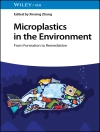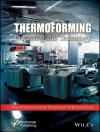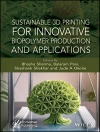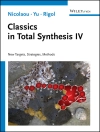Written by world-class authors, this most recent major book on the topic highlights new and current trends as well as future directions. It is comprehensive in its scope, covering all aspects of gold chemistry – from homogeneous to heterogeneous catalysis, from supramolecular assemblies to sensors and medicinal applications. The result is an invaluable work for both organic and inorganic chemists working in universities and industry, as well as material scientists.
Cuprins
GOLD(I) NITROGEN CHEMISTRY
Introduction
Tetra-, Tri-, and Dinuclear Gold(I) Amidinate Complexes
Oxidative-Addition Reactions to the Dinuclear Gold(I) Amidinate Complex
Mercury(II) Cyanide Coordination Polymer
Formation of Mixed-Ligand Tetranuclear Gold(I) Nitrogen Clusters
Solvent Influences on Oxidation and Nuclearity of Gold Guanidinate Derivatives
Cyclic Trinuclear Gold(I) Nitrogen Compounds
Oxidative-Addition Reactions to the Cyclic Trinuclear Gold(I)-Nitrogen Compounds
Supramolecular Entities of Trinuclear Gold(I) Complexes Sandwiching Small Organic Acids
Gold(I) and Silver(I) Mixed-Metal Trinuclear Complexes
CO Oxidation over Au/Ti O2 Prepared from Gold Nitrogen Complexes
Miscellaneous Observations
CHEMISTRY OF GOLD(III) COMPLEXES WITH NITROGEN AND OXYGEN LIGANDS
Introduction
Nitrogen Donor Ligands
Oxygen Donor Ligands
PENTAFLUOROPHENYL GOLD COMPLEXES
Introduction
Pentafluorophenylgold(I) Derivatives
Pentafluorophenylgold(III) Derivatives
Gold Clusters
Pentafluorophenylgold(II) Derivatives
Outlook and Future Trends
THEORETICAL CHEMISTRY OF GOLD – FROM ATOMS TO MOLECULES, CLUSTERS, SURFACES AND THE SOLID STATE
Introduction
The Origin of the Relativistic Maximum at Gold Along the 6th Period of Elements in the Periodic Table
Calculations on Atomic Gold
Relativistic Methods for Molecular Calculations and Diatomic Gold Compounds
Calculations on Inorganic and Organometallic Gold Compounds
Calculations on Gold Clusters
Calculations on Infinite Systems: From Surfaces to the Solid State of Gold
LUMINESCENCE AND PHOTOPHYSICS OF GOLD COMPLEXES
Introduction
Spectroscopic Properties of Gold(I) Complexes
Spectroscopic Properties of Gold(III) Complexes
Photoinduced Electron Transfer Reactions of Gold Complexes
GOLD COMPOUNDS AND THEIR APPLICATIONS IN MEDICINE
Introduction
The Aqueous Chemistry of Gold Compounds
Medicinally Important Gold Complexes, Their Analogs and Reactions
Gold-Protein Reactions and Complexes
Physiological and Cellular Biochemistry
NANOSCIENCE OF GOLD AND GOLD SURFACES
Introduction
Forms of Gold at the Nanoscale
Onset of New Phenomena
Surface Chemistry of Gold
LIQUID CRYSTALS BASED ON GOLD COMPOUNDS
Introduction
Pyridine Complexes
Dithiobenzoate Complexes
Isocyanide Complexes
Carbene Complexes
Complexes Containing Pyrazole-Type Ligands
Ionic Imidazolium Derivatives
Liquid Crystalline Gold Nanoparticles
Despre autor
Fabian Mohr is assistant professor (‘Juniorprofessor’) at the University of Wuppertal in Germany. He obtained his chemistry honours degree from RMIT University in Melbourne, Australia, where he also completed his Ph D on an Australian Government Scholarship under the guidance of Suresh Bhargava and Martin Bennett from the Australian National University. Postdoctoral appointments led him to work with Richard Puddephatt (University of Western Ontario, London, Canada) and Andrei Vedernikov (University of Maryland, College Park, USA). In 2004 he accepted a research grant from the Spanish Government to work with Mariano Laguna in Zaragoza. Upon completion of his contract in Zaragoza, he was appointed visiting professor at the University of Burgos before he took up his current position in Wuppertal in October 2006. In October 2007 Fabian spent two months as visiting professor at the University of Vienna in the group of Bernhard Keppler. Fabian has authored more than 35 papers and reviews, most of them on various aspects of gold chemistry. Outside the laboratory, Fabian is an accomplished harpsichordist and organist, specializing in historic performance practices and performing regularly both as soloist and with ensembles.












